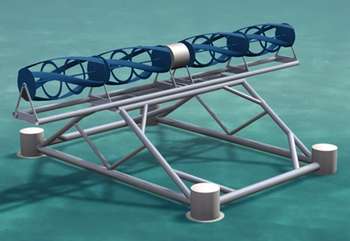Studies assessing noise impacts of wave, tidal energy systems
Effects of Noise on Wildlife, Ocean, Science Add comments
An article in Renewable Energy World this month provides a great overview of ongoing research funded by the DOE that is assessing environmental impacts of “Marine and Hydrokinetic” energy technologies. These new “MHK” systems include anything that generates electricity from the movement of water without dams, including systems that tap waves, tides, currents, or ocean thermal gradients. Much of the research looks at the ways these systems can change the physcial dyanamics of ocean ecosystems (e.g., reducing wave height by drawing energy from the waves, changes in sediment movement and salt/freshwater mixing, etc.). Of special interest here, of course, are the five studies (out of of 21 currently underway) that are looking at possible noise impacts.
Two are looking at areas where tidal turbine systems are in use or planned (Cook Inlet in Alaska and Admiralty Inlet in Washington); the Alaska study is looking for signs that beluga abundance or behavior is altered near a tidal turbine, while the Washington study is assessing existing background ambient noise and the acoustic footprint of a new tidal turbine. Other studies are testing an acoustic deterrence system to see if it keeps migrating gray whales out of a proposed wave energy park and developing an acoustic detections system that could spot marine life around MHK installations.
Looking at the bigger picture, several other DOE-funded efforts aim to integrate MHK planning and site choices into larger marine planning and conservation initiatives. Two of these are developing protocols and best practices for siting, taking into account environmental and navigational impacts, and another, being undertaken by the Pacific Northwest National Laboratory, is working to incorporate siting of MHK projects into NOAA’s marine spatial planning efforts (essentially, ocean zoning, designed to minimize conflicts between various uses of the ocean).
Finally, the DOE is leading international efforts at the International Energy Agency to come up with international standards and shared knowledge banks on environmental effects of MHK installations, as well as mitigation practices.
Check out the full article, replete with links and detailed charts of all the ongoing research!
Note: The image above is a rendering of ORPC’s TidGen tidal and current turbine, which is being shown off this week at the EnergyOcean International Conference in Portland, Maine.
